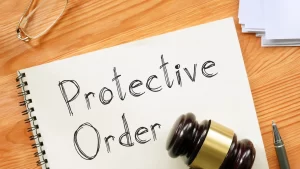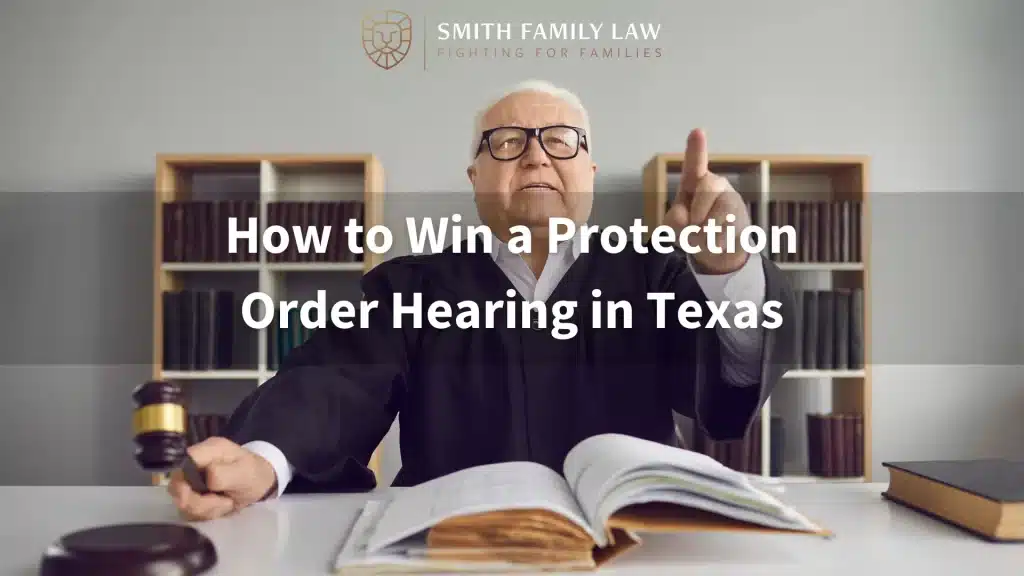If you are a victim of stalking, harassment, or family violence, you may be considering getting a restraining order against the perpetrator, and how to win a protection order hearing. A protective order in Texas is a legal prohibition that prevents someone from committing certain acts against you, including being within a certain distance of you or even speaking to you.
If a court grants a protective order against someone who is threatening you or who has threatened or assaulted you in the past, then that individual can get into serious criminal trouble if they violate it. However, it takes certain steps to ensure you get the right protection from the court for yourself or a loved one.
What to Expect at a Preliminary Order of Protection Hearing
The judge will review your petition and ask several questions to ascertain the level of danger the threatening individual poses.
They’ll probably ask you questions about the incidents you detail in your restraining order application, such as:
- Have you been physically harmed?
- Have you been sexually assaulted?
- Where has the person (stalker) been that they shouldn’t have been?
- If it’s a family violence problem, are you concerned that they could pick up your child from the child’s school or daycare?
- What specific kinds of threats has the individual made against you?
- Do you believe you are in imminent danger? Why?
What Proof Do You Need for a Restraining or Protection Order?
When applying for a protective order, the evidence needed depends on the type of protection sought. Providing the right evidence will increase your chances of winning a protection order hearing.
For restraining orders against stalkers, harassers, or those who’ve sexually assaulted or threatened to do so, evidence of such incidents is crucial. This may include text message screenshots or photos proving their presence where they shouldn’t be, such as your workplace.
Family violence protection orders require proof of past violence from the involved family member and a reasonable belief that it will persist or escalate. This may entail photos of inflicted injuries or accounts from witnesses who’ve seen your conflicts.
Promptly report each incident to the police or file a police report as soon as possible. Multiple police reports bolster your restraining order application, emphasizing the imminent danger.
Begin documenting all instances of abuse or harassment. For stalking cases, note dates, times, and locations of the stalker’s proximity or contact. In domestic violence situations, maintain a journal recording fights and conversations, including the content.
Save all media evidence, like text messages, photos, and videos, from those harassing or threatening you. It’s essential to note that a traditional relationship isn’t necessary to obtain a restraining order; even if you have limited acquaintance with the person, you can still seek protection.
How to Get a Protective Order in Texas
The initial step involves submitting an application to your county court. While filing the petition doesn’t require legal representation, an attorney can simplify the process, providing support and guidance.
You must also provide evidence with your application, showcasing the actions of the individual that led to your request for a restraining order and substantiating your belief that you’ll be in danger if they continue to have contact or proximity to you.
Can You Put a Restraining Order on Anyone?
Not really. You can’t put a restraining order on someone just because you don’t like them or can’t get along with them. Texas courts demand petitioners to demonstrate reasonable belief, backed by evidence, that they will face future harm from the individual subject to the restraining order. This is because restraining orders impose restrictions on an individual’s freedom.
How Hard Is It to Get a Restraining Order?
The more specific evidence you submit with your petition for a protection order, the easier it may be to convince a judge to grant one. An attorney can help you gather the right kind of evidence to justify the restrictions you wish to have placed on the other individual and argue your case before the judge.
What Happens When a Protective Order Expires in Texas?

Some stalking, sexual harassment, or assault restraining orders can last a lifetime, depending on the situation, so that individual may not ever contact you again.
If you feel that you are in danger, or if the restrained individual has committed a violation of a protective order, then you may be able to petition the court for another restraining order or file a police report and press charges. The individual could face a class A misdemeanor conviction, carrying penalties of up to $5,000 in fines and a maximum of six months in jail.
What Do You Need to Know to Win a Protection Order Hearing?
Nothing is guaranteed in a protective order hearing, but an experienced protective order lawyer in Austin can help you build a solid case to support your application for a protective order. We can help, and you can learn more in a confidential consultation with a compassionate family law attorney from Smith & Bledsoe Family Law. Call our team today at (512) 277-3166.
Related Reading:
